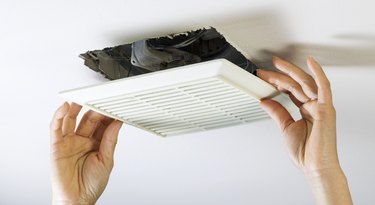Things You'll Need
Screwdriver
Water-based degreaser
Rags
Towels
Masking paper
Galvanized metal etching spray primer
High temperature spray paint
Respirator

You can enhance the appearance of your drab or mismatched heat registers by giving them a fresh coat of paint--as long as it's the appropriate type of paint. Before you begin, you should consider some important factors. Because heat registers are metallic, they are ill-suited for adhesion. You must apply a special coating that will abrade the register to provide a tooth for the paint to latch onto. In addition, you must choose a particular type of paint, capable of withstanding high temperatures, or the finish will ultimately bubble and peel.
Step 1
Turn off the heater and allow the register to cool for four to six hours.
Video of the Day
Step 2
Unscrew the screws on the register and remove it from the wall, ceiling or floor.
Step 3
Clean the register with a water-based degreaser. Rinse the register with wet rags. Dry the register with towels.
Step 4
Coat the heat register with a galvanized-metal-etching spray primer. Hold the can 8 inches from the register as you apply it. Wait 4 hours for the primed register to dry.
Step 5
Coat the primed heat register with a high-temperature spray paint. Hold the can 8 inches from the register as you apply it. Wait 6 hours before replacing the register to the wall, floor or ceiling.
Tip
Wear a respirator if you are working in a poorly ventilated area.
Warning
Do not paint over a bare heat register, or the paint will peel. Do not use a plain latex or oil-based primer on a heat register, or the finish will fail. Do not use a plain latex or oil-based paint on a heat register, or the finish may ultimately peel.
Video of the Day